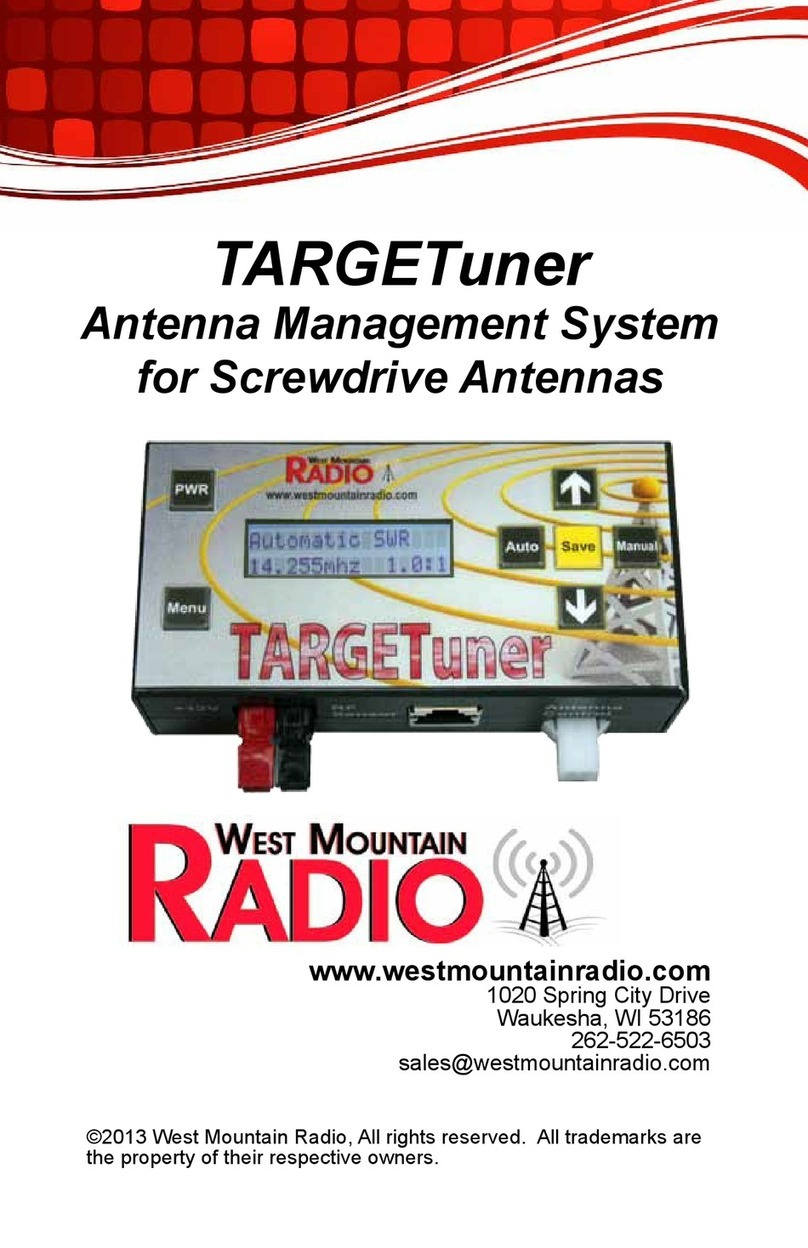
3
West Mountain Radio Operating Manual
We understand you have a choice when buying Amateur Radio products
and we would like to take a moment to thank you for choosing West
Mountain Radio.The TARGETuner is a state-of-the-art screwdriver antenna
management system which includes a controller unit with back-lit LCD
display and a remote sensor unit for frequency and SWR measurement.
The unit provides motor control for a wide variety of popular two or four-
wire Amateur HF screwdriver antennas.
The TARGETuner will work with any HF transceiver and does not depend
on special connections to the radio. In addition to the basic method of
operation the TARGETuner is capable of interfacing to the CI-V/CAT
jack of many radios which enables unique features not found on other
controllers.
The motor control uses a bi-polar transistor direct switch that
incorporates pulse width modulation for control of motor speed and
direction. Stall current sensing is programmable and a range of choices
are available for current limit settings.
The TARGETuner sensor module is remote from the control head which
limits the RF exposure to the controller circuitry and helps ensure reliable
operation. An industry standard shielded Category 5 cable (RJ-45) serves
as an interconnect between the two units.
Power is supplied through Anderson Powerpole®connectors for ease of
connection and fusing. If using a RIGrunner, it is recommended to use a
fuse value of 2 or 3 amps. Note that there is an internal ATC blade fuse in
the TARGETuner control head rated at 2 amps.
Theory Of Automatic Tuning - Basic Mode:
TARGETuner senses a transmitted carrier and makes frequency and SWR
measurements using the remote sensor. The controller will move the
antenna coil automatically for the best SWR match. The LCD will display
basic frequency and measured SWR during this process then indicate
“SWR Locked” when the match has been found.
Theory Of Automatic Tuning - CI-V/CAT Enhanced Mode:
TARGETuner senses a transmitted carrier and makes SWR measure-
ments using the remote sensor. Precise frequency information is supplied
via the CI-V/CAT interface. The controller will move the antenna coil
automatically for the best SWR match. The LCD will display precise
frequency and measured SWR during this process then indicate “SWR
Locked” when the match has been found. In addition to transmit tuning,
the TARGETuner is capable of tuning the antenna during reception (e.g.,
pressing the band switch or using the VFO on the radio will cause the
antenna to tune without having to transmit.)
Anderson Power Products® and Powerpole® is a registered trademark of Anderson Power Products, Inc.




























